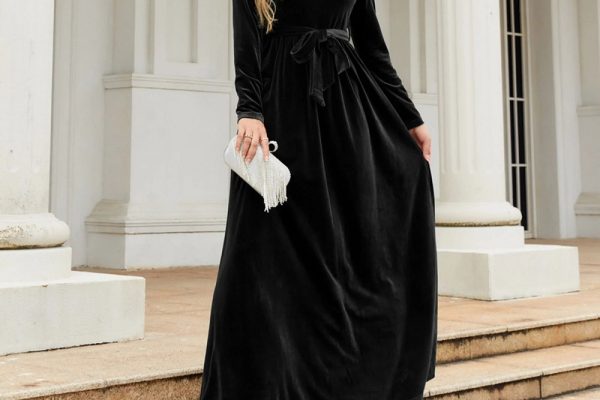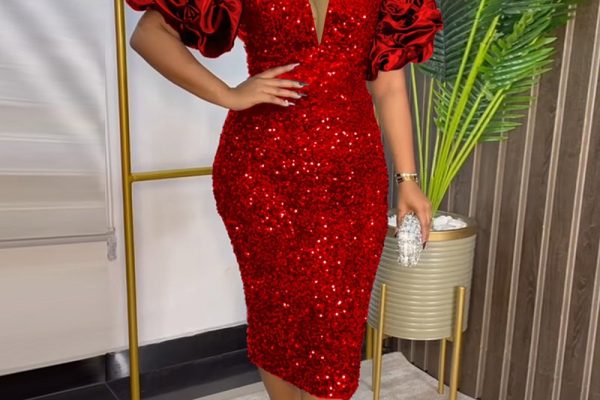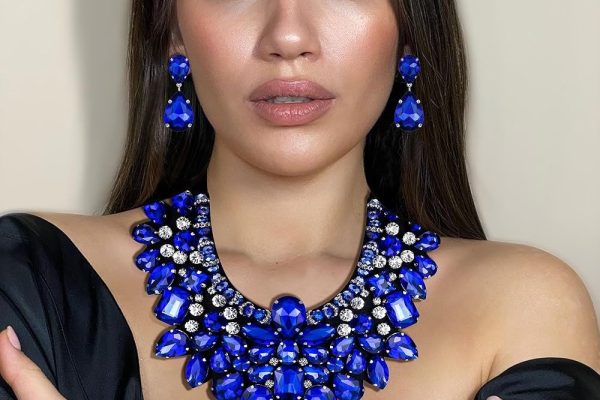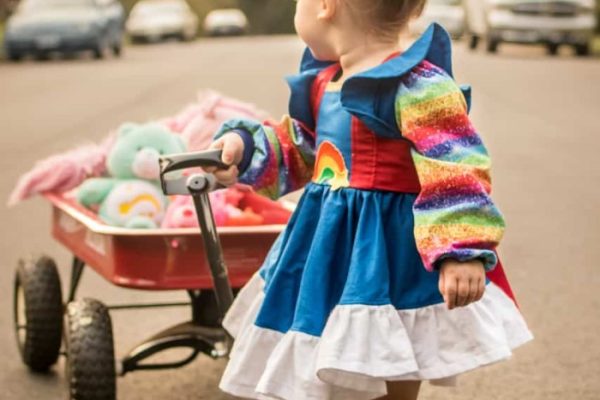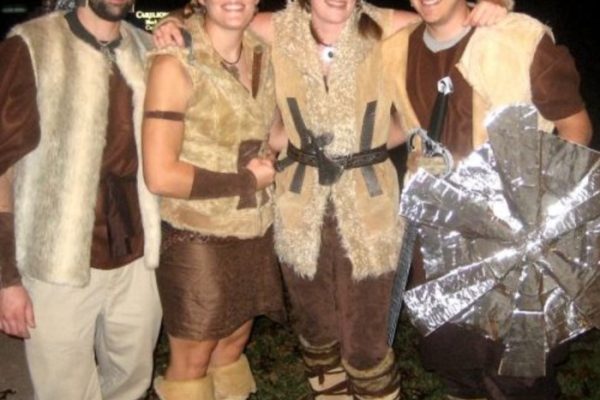Cosplay, the practice of dressing up as characters from various media, has gained immense popularity worldwide. Anime, a Japanese animation style, has been a major driving force behind this trend. Anime cosplay costumes offer a unique opportunity for fans to immerse themselves in their favorite fictional worlds and express their creativity.
The Appeal of Anime Cosplay
Anime cosplay has captured the hearts of millions due to several factors:
- Rich and Diverse Characters: Anime features a vast array of characters with distinct personalities, backstories, and appearances. This diversity provides cosplayers with a plethora of options to choose from, allowing them to embody characters that resonate with their own interests and identities.
- Detailed and Iconic Designs: Anime characters often have elaborate and memorable costumes, filled with intricate details and accessories. These designs serve as inspiration for cosplayers, who strive to recreate them as accurately as possible, paying attention to every nuance.
- A Sense of Community: The anime cosplay community is vibrant and welcoming, fostering a sense of belonging among fans. Cosplayers often attend conventions and events where they can connect with like-minded individuals, share their creations, and participate in various activities.

The Art of Cosplay Construction
Crafting an anime cosplay costume requires a combination of skill, patience, and attention to detail. The process typically involves several key steps:
- Research and Planning: Cosplayers begin by thoroughly researching their chosen character to understand their appearance, personality, and backstory. This information helps them make informed decisions about the costume’s design, materials, and accessories.
- Pattern Making: Patterns are created or adapted to fit the cosplayer’s body measurements. These patterns serve as templates for cutting fabric and constructing the various components of the costume.
- Fabric Selection and Cutting: The right fabrics are chosen based on the character’s appearance and the desired level of detail. The patterns are then used to cut the fabric pieces to the appropriate size.
- Construction: The individual pieces of the costume are sewn together, often using techniques like machine stitching, hand stitching, or gluing. Additional elements, such as armor, props, or wigs, may also be created or acquired.
- Finishing Touches: Once the basic construction is complete, the cosplayer adds the finishing touches to their costume. This may include altering the fit, adding embellishments, or applying makeup and accessories to complete the character’s look.

Types of Anime Cosplay Costumes
Anime cosplay costumes come in a wide variety of styles, ranging from simple outfits to complex and elaborate creations. Some popular types include:
- Everyday Wear: These costumes are based on characters’ casual attire and can be worn comfortably in everyday life.
- Heroic Outfits: Costumes inspired by heroic characters often feature bold colors, intricate designs, and powerful symbols.
- Fantasy Costumes: Anime set in fantasy worlds often feature unique and imaginative outfits, often incorporating magical elements or mythical creatures.
- School Uniforms: Many anime characters attend school, and their uniforms can be popular cosplay choices.
- Character-Specific Costumes: Some costumes are highly specific to a particular character, capturing their unique appearance and personality.
Sizing and fit
Achieving a proper fit for your anime cosplay costume is crucial to ensuring comfort, mobility, and overall satisfaction. Here are some tips to help you achieve the best results:
Take Accurate Measurements
- Body Measurements: Measure your bust, waist, hips, height, and shoulder width. These measurements will be essential for determining the correct size for your costume.
- Costume Measurements: If you’re purchasing a pre-made costume, refer to the size chart provided by the seller. Compare your body measurements to the chart to find the best fit.
Consider Costume Design
- Stretchiness: Some fabrics, such as spandex or Lycra, are more stretchy than others. Consider the stretchiness of the fabric when choosing your size.
- Layers: If the costume has multiple layers, you may need to size up slightly to accommodate the additional bulk.
- Armor and Accessories: Heavy armor or bulky accessories can affect the overall fit. Factor these elements into your sizing decisions.
Alterations
- Professional Alterations: If the costume doesn’t fit perfectly, consider having it altered by a professional tailor or seamstress. They can make adjustments to ensure a comfortable and flattering fit.
- DIY Alterations: For minor adjustments, you may be able to make alterations yourself. However, it’s important to have basic sewing skills and knowledge of fabric manipulation.
Comfort and Mobility
- Test Fit: Try on the costume before wearing it to a convention or event. This will allow you to identify any discomfort or mobility issues.
- Adjustments: If the costume feels too tight or restrictive, consider making adjustments to improve your comfort.
- Accessories: Avoid wearing heavy or cumbersome accessories that could limit your mobility.
Additional Tips
- Consider Your Body Type: Different body types may require different sizing approaches. Be aware of your body shape and how it may affect the fit of the costume.
- Check Reviews: Read reviews from other cosplayers who have purchased the same costume. Their feedback can provide valuable insights into the sizing and fit.
- Plan Ahead: Give yourself plenty of time to make any necessary alterations or adjustments before your event. This will help you avoid last-minute stress.
By following these guidelines and taking the time to ensure a proper fit, you can enjoy a comfortable and confident cosplay experience.
The Impact of Anime Cosplay
Anime cosplay has had a significant impact on popular culture, influencing fashion trends, art, and even the entertainment industry. It has also provided a platform for self-expression, creativity, and community building.
- Fashion Influence: Anime cosplay has inspired fashion trends, particularly among young people. Elements like bold colors, unique accessories, and intricate details can be seen in everyday fashion choices.
- Artistic Expression: Cosplay is a form of artistic expression, allowing individuals to showcase their creativity and skills. Cosplayers often experiment with different materials, techniques, and designs to create unique and visually stunning costumes.
- Community Building: The anime cosplay community is a tight-knit group of individuals who share a common passion. It provides a space for people to connect, support one another, and celebrate their shared interests.

Cosplaying etiquette and community
Cosplay, the practice of dressing up as characters from various media, has grown into a thriving community worldwide. To ensure a positive and enjoyable experience for everyone involved, it’s essential to adhere to certain etiquette guidelines.
Respect for Others
- Consent: Always ask for permission before taking photos of someone in costume. Respect their wishes if they decline.
- Personal Space: Be mindful of others’ personal space, especially during crowded events. Avoid touching or crowding people without their consent.
- Criticism: Offer constructive criticism and avoid making negative comments that could hurt someone’s feelings.
Costume Care
- Avoid Damage: Handle costumes with care to prevent damage. Be gentle when putting them on or taking them off.
- Cleaning: Keep costumes clean and free from stains. Follow the care instructions for specific fabrics.
- Storage: Store costumes properly to maintain their shape and condition. Use appropriate hangers or storage containers.
Event Behavior
- Follow Rules: Adhere to the rules and guidelines set by the event organizers. This includes respecting designated areas, avoiding prohibited activities, and being mindful of noise levels.
- Line Etiquette: Be patient and follow the line when waiting for activities or merchandise. Avoid cutting in line or causing disruptions.
- Respect Others’ Time: Be punctual and avoid keeping others waiting. If you’re running late, communicate with the group or event organizers.
Community Engagement
- Support Others: Encourage and support fellow cosplayers. Offer compliments, share tips, or help with costume adjustments.
- Be Inclusive: Create a welcoming and inclusive environment for all cosplayers, regardless of their skill level, experience, or background.
- Participate in Events: Attend conventions, meetups, and other cosplay-related events to connect with the community and share your passion.
Additional Tips
- Research Characters: Learn about the characters you plan to cosplay to understand their personalities, backstories, and cultural significance.
- Budget Wisely: Set a realistic budget for your costumes and accessories. Consider the cost of materials, labor, and any necessary alterations.
- Be Safe: Prioritize your safety, especially when wearing complex or heavy costumes. Avoid tripping hazards, overheating, or other potential risks.
By following these guidelines, you can contribute to a positive and inclusive cosplay community. Remember, the goal is to have fun and celebrate your shared passion for characters and creativity.
Anime cosplay costumes offer a fascinating blend of imagination, creativity, and craftsmanship. They allow fans to immerse themselves in their favorite fictional worlds, express their individuality, and connect with like-minded individuals. As the popularity of anime continues to grow, so too will the diversity and complexity of anime cosplay costumes.

